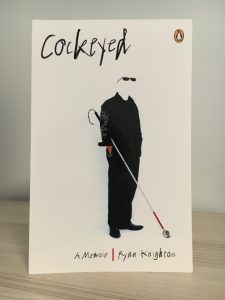Through examining life narratives and autobiographies, I am intrigued by the ability of these texts to create an identity. Instead of directly stating personal attributes, they are embedded into the stories told by the author. In doing so, it builds the image of a person the author wishes to portray. With all the time spent examining these stories, however, it can give the idea that these snippets of self-identity primarily exists in the forms of diaries and memoirs. Growing up in a society dominated by social media, it becomes easy to forget that we practice this self-creation everyday. The rise and expansion of social media serves as a platform for the public to publish, though differing from traditional ways, their own life narratives on a daily basis. Yet how can we validate the content we view and post everyday?
On one hand, these digital narratives provide an easily accessible for the public to share their stories with the world. Its ability to reach millions of people around the world, free of charge, is absolutely astounding. But like any life narrative, it brings about the question of authenticity. Social networking sites are full of built-in options for the individual to edit posts so that they fit their liking. Websites, such as Facebook, recognize the importance of the audience the individual is posting their life to. It even allows for users to view their own page through the eyes of their targeted audience. Consequently, this affects the style of the content posted by the user.

But why are individuals so consumed by the idea that they must portray a specific image? Sociologist Erving Goffman draws on the idea of impression management, the actions that we carry out everyday to ensure that the projection of ourselves are acceptable. He acknowledges that “in everyday life…there is a clear understanding that first impressions are important.” (Goffman, 143) So, in order to give off the desired image, individuals must conceal parts of themselves that do not fit into this mold. Insecurities are easily blanketed by the array of filters and editing options social networks provide.
Acquiring audience approval seems to take the forefront priority in any post an individual chooses to share online. Lessons are shared online to educate users on what kind of posts or pictures will garner more attention, or yield “66% higher traffic” (Brink AddThis Tips). These websites provide insight on how to gather a broader audience to broadcast to, and subsequently providing a greater sense of acceptance by society. In addition to websites stressing the need to post within a certain criteria, celebrities and Internet sensations also act as indirect coercers. They create an online society in which only an elite group of users are able to join, promoting users to share specific content that are accepted by this group.

Celebrities such as Selena Gomez, who stands as the most followed individual on Instragram, engages with her followers by reminding them of her presence. By stating that she is “stalking” some of her follower’s pages as well, she forces users to believe that they too must fill their profiles with content that matches her level of excitement, as this is no ordinary audience. Gomez is an individual who embodies a life of luxury and fame, and users see her profile as one that gains attention, and in turn, elect and edit certain parts of their own lives in an attempt to emulate this lifestyle.
As a result of editing and coaxing, digital narratives challenges the value of authenticity. Can individuals say that extracts of their lives posted online are authentic, and true to themselves? Does our true self-identity get buried under a blanket of hashtags and filters, reducing us to carbon copies of one another? As more options become available to alter our own projections, how do we ensure that the content remains an accurate representation of our lives?
Works Referenced
Brink, Christian. “5 Instagram Tips For Beginners”. AddThis Blog. N.p., 2016. Web. 17 Oct. 2016.
“Most Followed Instagram Accounts 2016 | Statista”. Statista. N.p., 2016. Web. 17 Oct. 2016.
“Instagram Photo By Selena Gomez • Nov 8, 2015 At 8:34Pm UTC”. Instagram. N.p., 2016. Web. 17 Oct. 2016.
Smith, Sidonie and Watson, Julia, “Reading Autobiography : A Guide for Interpreting Life Narratives”, Second Edition, Minneapolis, University of Minnesota Press, 2010. Print.
Goffman, Erving. “The Presentation of Self in Everyday Life.” New York: Anchor Books, 1959. Print. pp. 139-145.

